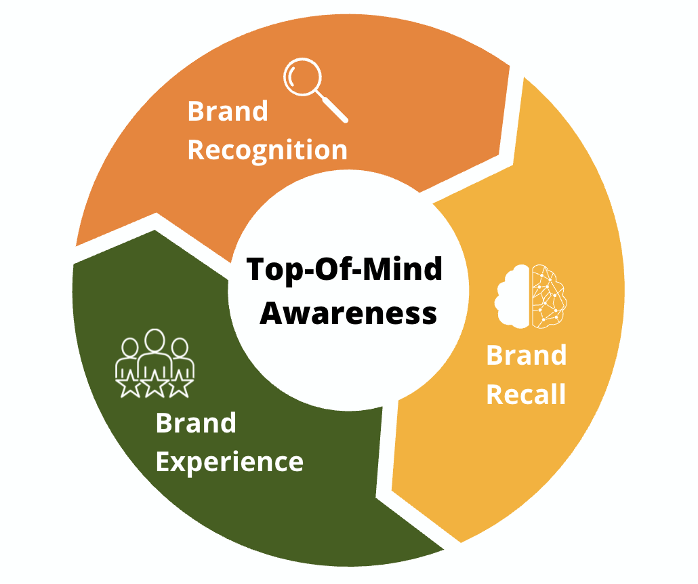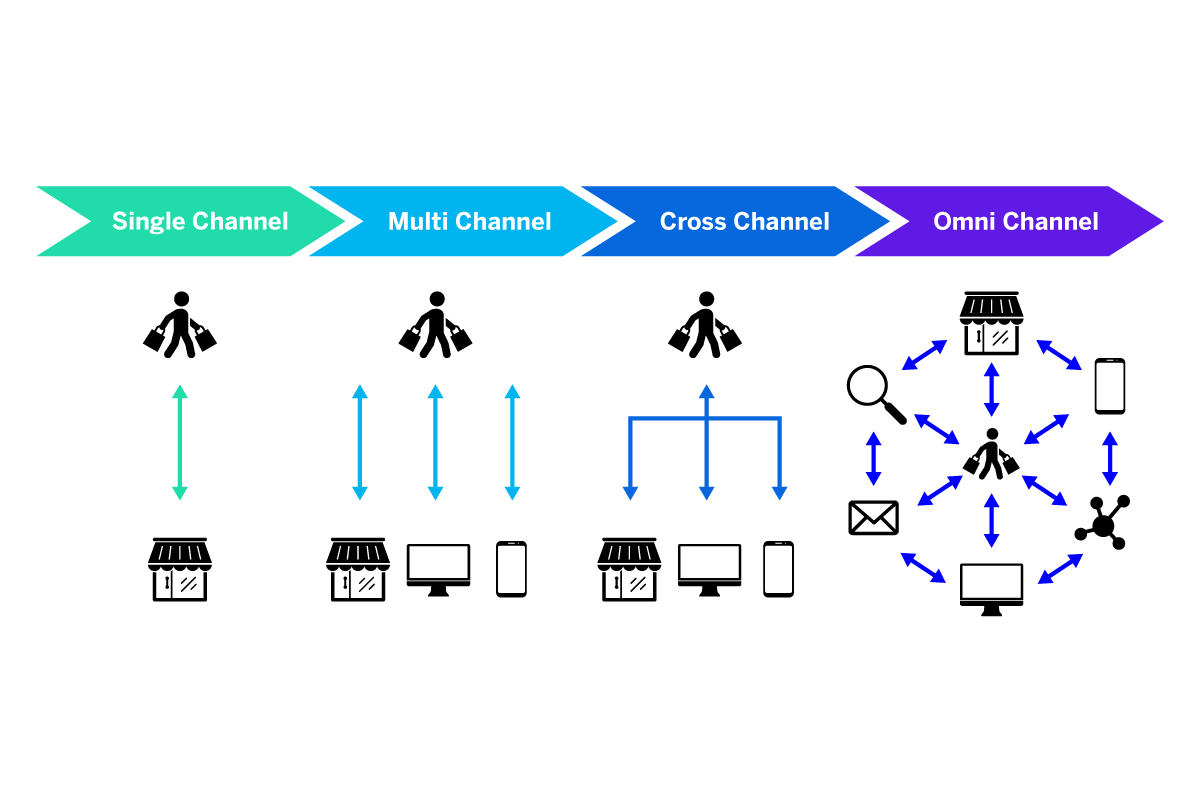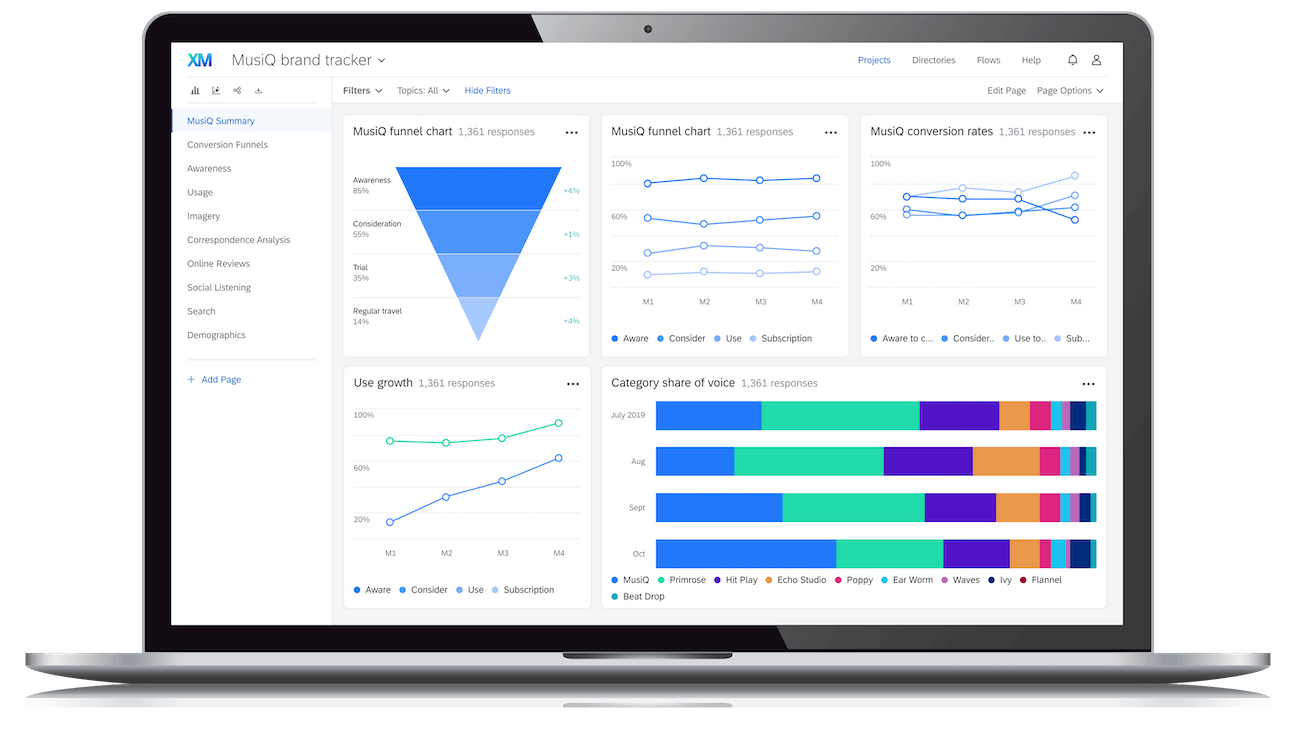What is top of mind awareness?
If we asked you to think of a video game character off the top of your head, what would you come up with first? There’s a good chance it’s either an Italian plumber or a blue hedgehog, right? Well, in essence, that’s top of mind awareness.

And it’s the same for famous brands and prominent retailers. In the world of market share, brand loyalty and business growth, top of mind awareness is what we call that instant recall of the companies we know. It’s when a consumer names your brand first when thinking about a specific industry, product category, or niche.
“Always remember: a brand is the most valuable piece of real estate in the world; a corner of someone’s mind.”
― John Hegarty, Hegarty on Advertising
Usually, when we’re talking about top of mind awareness, we’re thinking about unprompted brand recall – that’s where the brand can be named without needing any help.
As a metric, then, it’s a great indication of how well you’re building brand awareness, but it’s worth noting that the first brand someone mentions doesn’t always mean ‘best’ – top of mind awareness can also be ‘achieved’ in reference to a negative experience. For instance, if you’re asked to name a brand with terrible customer experience, you might have a clear nominee.
Get started with our free brand awareness survey template
Why is top of mind awareness important?
Top of mind awareness, really, is the ultimate goal of brand building and brand awareness work. After all, if you’re the first brand someone thinks of when they’re thinking of buying a new product, you’re a long way towards calling them a customer
In that way, top of mind awareness can be seen as a kind of cyclical win; people will think of you first, so they’re more likely to purchase your products, which makes them more likely to think of you first next time – and so on.
More specifically though, there are a few key reasons why top of mind awareness is important:
1. You’ll inch out ahead of the competition
Consumers who think of you first will, at the very least, put you in the running for their next purchase decision. While they might also conduct their own research, if you achieve top of mind awareness, you’re likely to guarantee your spot on the shortlist.
2. You’ll be trusted
People naturally are drawn toward familiarity. Brand awareness of any kind helps you stand out in a crowd, and top of mind awareness even more. In fact, 71% of consumers feel that it’s important they recognize a brand before they make a purchase.
3. You’ll gain repeat customers
Top of mind awareness is strongly linked to brand loyalty. There’s a good chance that if a consumer thinks of you first, it’s either because your marketing efforts and reputation are top tier, or that they have had a positive experience with you in the past. With the latter, that awareness fuels a circular purchase funnel that keeps customers loyal.
Top of mind awareness: organizational benefits
As well as the reasons mentioned above, there are a couple of key practical benefits that being top of customers’ minds will bring, across a couple of vectors:
1. Marketing and PR
If you’re already known far and wide, your marketing team can stop needing to be so focussed on explaining who you are and what you do. In effect, that means you can get more creative, which in turn will result in more memorable campaigns. In practical terms, that can mean spending less on advertising and marketing, or at the very least branching out into areas and approaches that are distinct from how your competitors advertise.
Likewise, your PR campaigns should find a more receptive media audience if you’re already well-known – outlets will be more willing to feature your news if you’re a popular brand.
2. Search
You’ll find that you need to spend less money on SERP advertising if you already have top of mind awareness, meaning you’ll increase traffic organically. Take eBay, for example. If you’re a competing bidding website, you’ll need to rely on paid advertising to gain traction in search.
Most people, when looking to buy or sell something via auction online, will probably either go straight to eBay or search for it directly. In fact, eBay found that its top of mind awareness was so strong that it was effectively wasting money on paid search ads.
How to increase top of mind awareness
Ok, so how do you actually build brand awareness to the point where you achieve top of mind awareness? Well, that kind of traction is built through the mastery of a few fundamental tenets of your marketing efforts, brand-building work, and ongoing processes.
We’ve outlined each of these below, with a link to our ultimate guides for each…
Increase brand awareness
Brand awareness directly leads to top of mind awareness, and the best way to improve that is to have a tightly-integrated brand strategy and marketing strategy. The tacts you’ll want to employ for this are numerous, encompassing everything from TV advertising and SEO, digital and thought-leader content, to sponsorships, partnerships and events.
Build an omnichannel presence
It’s not enough for brands to be sporadic in their outreach and customer service anymore – your approach needs to be aligned and integrated across multiple channels. We call this ‘omnichannel’ thinking, and mastering it is the key to resonating with your target audience. Do it right and you’ll foster a sense of recognizable uniformity, and a consistency in approach that builds trust.
How to think ‘omnichannel’
Everything you need to know to cut through the noise
Conduct constant market research
You won’t be able to build your brand in the direction customers expect and want without continuously understanding what they’re thinking. To that end, building a team of market researchers is invaluable – it’ll help you understand what your existing customers think, as well as what your competitors are getting right. Importantly, this needs to happen continuously, so that you can remain agile and up to date with what the real-time picture is.
Learn how to conduct market research like a pro
Offer a great customer experience
Many brands reach top of mind status thanks to a world-renowned focus on the customer experience. It’s an oft-repeated example, but Apple is one of those companies that’s known for its customer service quality – and it has an army of brand-loyal customers as a result. And, as we mentioned at the top, this goes both ways: brands offering a poor customer experience will achieve an altogether different kind of reputation, and will struggle to build relationships that affect conversion rates.
How to measure top of mind awareness
Ok, so you’re making great strides in terms of awareness, to the point where you think you’re edging true towards top of mind awareness in your product categories. How do you know for sure? Well, there are a few key ways to measure your success:
Brand recall
You can measure recall by performing surveys. Brand recall is normally a combination of aided and unaided questions, where the former offers a cue (like a logo, or even a list of names), and asks which ones the customer has heard of. Unaided brand awareness, in which the respondent names brands in a category without any help, is key here.
Your top of mind awareness score is the percentage of respondents who can not only name your brand unaided – but who name you first.
Social share of voice
Brands often use social listening to take stock of their overall social media presence – that is, how much of the conversation around your category, market, or product type you’re occupying through mentions on social channels. That’s alongside being able to do the same for your competitors, to see how you stack up.
The important thing is to do this on a regular basis; it’s only by measuring share of voice routinely that you’ll see changes – positive or negative. The more regular, the more you can adjust your omnichannel presence.
Share of branded search
Similarly, you’ll want to use a search keyword suite to see how many organic searches include your brand name versus those of your competitors. It’s a simple yet powerful calculation, as share of search is a fairly direct indication of how many consumers think of you before they think of any other brands.
Again, the more regularly you monitor this metric, the more you’ll be able to monitor change and adapt strategies as a result.
How to get the most out of measurement
The best way to improve any metric is to measure them as often as possible, bring them all together, and act on what you learn as a result.

To that end, a dedicated brand management suite is a powerful ally. Qualtrics’ XM platform™, for example, can connect the dots between social listening, third-party review sites, share of search, customer support calls, questionnaires, and everything in-between to paint a vivid picture of brand health.
Truly smart brand management tools can do all this in real-time and – far from simply presenting you with reams of data – actually contextualize it with suggested actions that can help move the needle and increase sales.
Ultimately, achieving top of mind awareness is all about making sure that your value proposition – across all verticals – resonates with your target audience. That means listening to what customers want, understanding their needs, and reflecting that in your positioning on an ongoing basis. Click the link below to see how Qualtrics can help.
Get started with our free brand awareness survey template